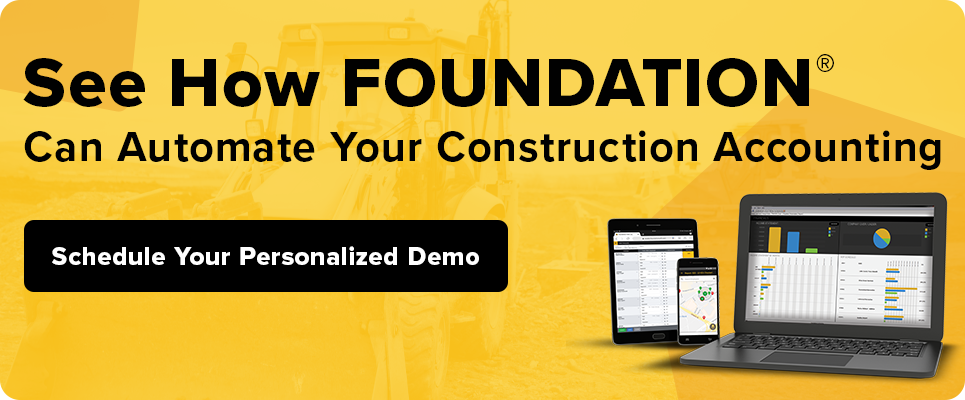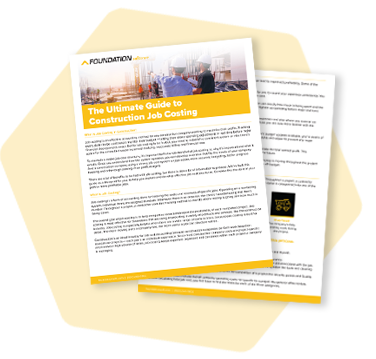
Running a construction business without a solid job costing plan is like walking blindfolded around the Grand Canyon—one misstep could spell disaster. Job costing allows contractors to truly see how they’re doing on projects, both individually and overall. This insight doesn’t appear magically; it requires hard work and commitment. Contractors with an effective plan in place can gain a significant advantage over their competitors.

Step 1: Determine How Job Costing Can Benefit the Company
Job costing can impact contractors at many different stages. Whether contractors are looking to gain a better handle on existing businesses, expand into new projects or just take current practices to the next level, the payoffs are numerous.
First, take a step back to understand what job costing is and how doing it effectively can enhance business. Talk to other contractors and consult with a CPA firm that specializes in the construction industry. Determine what role job costing would have in your business. Would it help to see a more detailed breakdown of costs? Could your company submit more accurate bids using historical data? Working through this discovery stage will help clarify the potential benefits of job costing, such as:
- More timely and accurate reporting
- The ability to track actual costs against detailed job budgets
- A store of historical data for more accurate future bidding
- The ability to monitor job statuses at a high level or at a detailed level
- The opportunity to be proactive by making prompt changes based on current data
- Knowledge of exactly where costs are incurred
Once contractors identify the advantages they stand to gain, they can set goals for their job costing and make the commitment so that the work of implementation can begin.
Step 2: Define a Realistic Approach That Fits the Company’s Goals
Because job costing is different for every construction company, it’s imperative to initiate an open dialog among the people who will be involved in the process. Implementation team members should include the owner, senior-level estimators, project managers, foremen and the accounting staff. During the initial meeting, the team should establish what goals the company wants to achieve by job costing and define a realistic approach with the best chance of succeeding. Jumping headfirst into an elaborate structure that becomes too difficult to follow would be counterproductive. Instead, a company that has never done job costing should first master a basic structure and then expand on it as personnel gets more comfortable. Job-costing processes cannot be set up in a day, nor can the task be done without buy-in from all levels of the company.
In addition to gathering input from the team, continue to consult outside resources, including industry professionals and online materials. One useful resource is the Construction Specifications Institute’s (CSI) code system.
To initiate a productive conversation among the team when brainstorming goals for job costing, ask questions such as the following. What are some of the primary activities performed on jobs? What kind of detail does management want to see? What information does the accounting staff want to track? What types of reports are needed? Companies will also need to consider how timecards will come in from the field with the correct job-costing information.
A final part of this stage will include planning a rollout to the employees. How will employees be educated in the new system? Who will be responsible for completing the tasks? The data that appears on your reports will only be as good as your data entry. To ensure that people remain committed, management should follow up by meeting weekly to assess the implementation and the quality of their data. Continuing these weekly meetings after implementation is in full swing will allow proactive management of each job under the new costing structure.
Step 3: Execute the Plan and Deliver Results
The final step involves identifying a “vehicle” for executing the job-costing system. Again, the best solution will not be identical between each company. This may depend on factors such as size and specialization—residential, highway-heavy, government, etc. Companies will also want to consider additional goals for their technology, whether project-management tools are a priority, whether software as a service (SaaS) is a desired offering and whether integration with other software is imperative. In most cases, a construction-specific accounting application is advisable, since a general-purpose accounting packages may not afford the level of job-costing detail required.
For companies that already have construction accounting software in place but have not yet fully utilized its job-costing capabilities, now is the time to contact the software vendor to explore these options. A dedicated vendor will take the time to understand these goals and provide the training necessary to help execute the plan. Additionally, they may offer supplementary tools, such as mobile entry, that will capture costs and other data from the field and send it back to the office, making it easier for on-site workers to submit accurate and up-to-date data.

Implementing a job-costing structure is a big decision that requires hard work and persistence. But putting the right processes in order the right way is one of the most valuable decisions any construction business owner can make to ensure the company’s financial health today and into the future.
*A version of this article first appeared in Construction Business Owner.
Share Article
Keep on current news in the construction industry. Subscribe to free eNews!
Our Top 3 YouTube Videos
Learn about our software more in depth with product overviews, demos, and much more!

Our ACA reporting & e-filing services include official 1094-C and 1095-C IRS reporting, optional e-filing (no applying for a TCC code required), mailing to your employees and experienced support to help you.

There are plenty of reasons to make FOUNDATION your choice for job cost accounting and construction management software — just ask our clients!

From job cost accounting software, to construction-specific payroll. Get an overview on your next all-in-one back-office solution.



